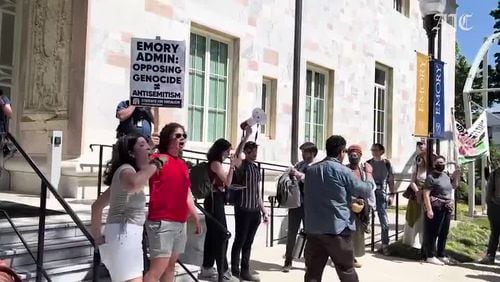For many of us, growing up in a traditional nuclear family meant a married mom, dad and a kid or two.
Changing lifestyles and economics, however, have flipped that image on its head.
So, what does a traditional family look like today?
That’s a question that Carlton Mackey, director of the Ethics and the Arts Initiative at Emory University hopes to answer or, at least, get people to think about.
“We want to show the world, particularly the Atlanta community, that what we consider family is really much broader than a Judeo-Christian, heterosexual, educated, white family with a kid who goes to college,” he said. Some “families in this city certainly are that, but it’s also all kinds of people who are working to be a family in the middle of beautiful and challenging circumstances. There are families living on the streets or sleeping in cars who aren’t even blood related who have decided to take care of each other and create a family unit.”
For instance, a recent Pew Research report showed that 57 million Americans live in multi-generational households in 2012 — a record number and double that in 1980.
Mackey plans to select 15 metro Atlanta families to share their stories and receive a free family portrait as part of a project called “Typical American Families.”
The project, which recently received a $2,500, 2014-2015 “Ideas Challenge Grant” from One Region Atlanta, seeks to dispel some of the assumptions about nontraditional families while at the same time, celebrate diversity. The family stories and photographs will be included in a 2015 traveling exhibit and be part of an existing online project.
Mackey is part of that expanding definition of family. The married father of one is in an interracial relationship.
His mother died when he was four. His father assigned guardianship to his parents, who raised Mackey and a sister.
His grandmother “became basically my mother, although my dad was very present he just couldn’t raise me as a single dad. It made me very much who I am. The funny thing — true to the definition of this project — is that I saw us as just a regular family. Just a typical American family trying to do the best we could with what we had.”
For the project, Mackey is partnering with professional photographer Ross Oscar Knight.
“It continues the conversation about our ever-changing world and cultural landscape,” Knight said.
Hollywood and the advertising industry are also taking note. Television shows like “The New Normal,” which was cancelled in 2013, focused on two gay men expanding their family. Then there was the controversial Cheerios commercial featuring an interracial couple and their daughter.
Although the exhibit will have about 15 families, Mackey said many more will be added to the online gallery.
“We don’t want this to ever end,” he said. “We want thousands.”
Diversity is certainly nothing new, but it’s never really be celebrated, he said. “Even though my family is interracial, I may have never sat down and had a meal with two women raising an adopted child from Guatemala.”
At some point, the families selected for the exhibit will be brought together.
Though different, the families probably want the same things in life.
What are the ties that bind us and what are those things that make us distinct?
For more information go to www.typicalamericanfamilies.com. Submissions will be taken through Dec. 23.
About the Author






